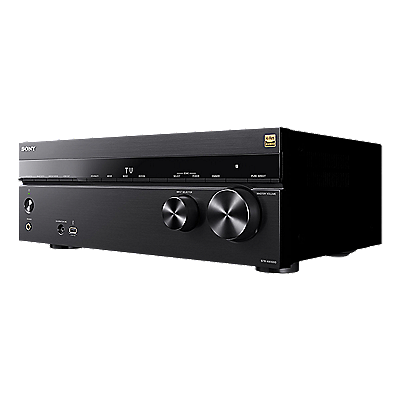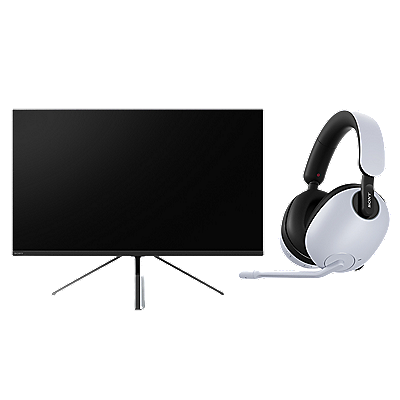No sound or audio from the source device when connected to the TV with an HDMI cable
This article provides information and steps to help troubleshoot no sound from your source device (Blu-ray Disc™ player, set-top box, etc.) when connected to your TV with an HDMI cable.
Perform each step only as needed to resolve the issue. Steps and information for your device may vary, if you require model-specific information, refer to the
manuals
for your products.
Troubleshooting steps and information:
-
These steps provide easy solutions to common issues that occasionally occur. Check if the issue is resolved after each step is performed.
- Try increasing the volume of your TV, set-top box (cable box, satellite, etc.), or sound system connected to your TV.
- Make sure the TV isn't muted. Check your TV remote for a MUTE button. Pressing the MUTE button will toggle the mute function on and off.
Note: When using a set-top box or sound system connected to your TV with a mute function, ensure this device is also not muted. - Try turning off your TV, any set-top box device (cable box, satellite, etc.), and sound system if connected to your TV, and then turn them back on.
- Make sure you don't have headphones or any other devices connected to the headphone jack of your device.
- For cable and satellite boxes, try switching to a different channel. An issue can occur with the broadcast of certain channels.
- Disconnect and then reconnect HDMI cable connections to both the source device (set-top box, Blu-ray Disc™ player, etc.) and the TV. If the cable is not making a good connection, you could lose sound.
Note: If you're using an ARC/eARC connection, check the article: There is no sound when using a TV or audio system with the ARC/eARC feature.
- Perform a power restart or reset
Performing a power restart or reset of your TV or connected devices often resolves an occasional issue.
- Power restart or reset your TV:
You may be able to perform a power restart of your TV using the remote control or a TV menu option (depending on the model), otherwise perform a power reset.
-
Power restart your TV
Steps vary, follow the steps that best match your TV menu:
- Restart the TV with the supplied remote control:
- Press and hold the POWER button until Power Off appears on the screen
- Press and hold the POWER button until a menu appears → select Restart
- Restart the using the TV menu:
- On the supplied remote, press the
(Quick Settings) button, then select → Settings → System → Restart → Restart
- On the supplied remote, press the HOME button, then select Settings → About → Restart → Restart
- On the supplied remote, press the HOME button, then select Settings → Device Preferences → About → Restart → Restart
- On the supplied remote, press the
Note: When restarting using your remote or the menu, the TV will automatically turn off and back on after a short time. - Restart the TV with the supplied remote control:
-
Power reset your TV
- Turn off the TV.
Note: For a projection TV that uses an internal lamp, wait 5 minutes after turning off the TV to allow the lamp to cool before continuing. - Unplug the TV power cord from the electrical outlet and leave it unplugged for at least 60 seconds.
- Plug the TV power cord back in and turn it on.
- Turn off the TV.
-
Power restart your TV
- Power reset your set-top box (cable box, satellite, etc.) or sound system:
- Turn off your set-top box or sound system.
- Unplug the power cord for the device from the electrical outlet and leave it unplugged for at least 60 seconds.
- Plug the power cord back in and turn it on.
- Make sure your TV is set to the correct input to receive the signal from the source device. If you lose both audio and video, you may have the wrong input selected. Press the INPUT or Source button on your TV remote to toggle through your options.
- Try connecting your HDMI cable to a different port on your TV, making sure to switch the input selection of your TV to match.
- Check the HDMI® signal format in the TV menu settings (Android TV™/Google TV™ models)
Check the HDMI signal format in the TV menu settings, if it's set to Enhanced, change it to Standard.
- On the supplied remote control, press the
(Quick Settings) or HOME button (depending on the model).
- Select
Settings.
- The next steps will vary depending on your TV menu options:
- Select Watching TV → External Inputs → HDMI signal format → select the appropriate HDMI 1 - 4 → Standard format.
- Select External Inputs → HDMI signal format → select the appropriate HDMI 1 - 4 → Standard format.
Note: The HDMI signal format setting is specific for each HDMI port. This means that you may need to change the settings for each HDMI port to which a device is connected.- Check the audio output settings of your source device to ensure it's set to output a compatible audio signal.
You may need to change the audio output settings on your source device. Try setting the audio output of your source device to PCM or 2-channel audio instead of Dolby Digital® or DTS sound.
Note: These are general suggestions, for specific steps and settings for your device, check your device manual or the manufacturer for assistance.- If you're using a set-top or cable box:
- Make sure the volume is turned up. You also may need to go into the set-top box menu and select HDMI in the Audio Settings or Audio Coding section to pass the audio to the TV.
- Earlier versions of set-top box firmware didn't properly handle automatic HDMI connections. You may need an update to your set-top box firmware, or a newer set-top box from your service provider.
- If you're using a computer:
- Set the appropriate HDMI properties.
- You'll need a separate audio connection if your computer recognizes the HDMI connection as a DVI connection.
- If possible, try connecting your source device to a different TV.
Note: This step determines if the issue is with the source device. If you have sound with another TV, continue troubleshooting to diagnose the original TV. If you don't have sound, there may be an issue with your cable or the source device.
- If you haven't done so already, try replacing the HDMI cable.
- Perform a factory reset of your TV
Select your TV type for information:
If the issue still occurs, repair may be required. Go to Product Repair.
Please accept Youtube cookies to watch this video
Access your cookie preferences below and make sure to switch on the Youtube cookie under the 'Functional' section.
Related Articles
Product Repair
Repair information and service assistance
Community
Here you can ask questions and connect with other Sony users
Parts & Accessories
Product information and sales assistance
Register a Product
Keep track of all your products in one location
Contact Support
Product support & customer relations























